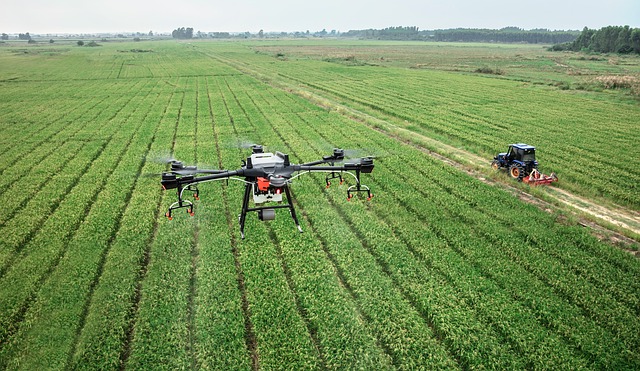Wildhearths are gruellingly troublesome to wrestle, and their behaviour and unfold are notoriously exhausting To foretell. Fires can journey As a lot as six miles per hour in forests and As a lot as 14 miles an hour in dry grass. If terrain slopes upwards, these speeds can double.
Although not educated to wrestle hearths, Mechanical and Aerospace Engineering Affiliate Professor Mrinal Kumar and his group acquired a Nationwide Science Basis (NSF) grant to develop autonomous unmanned aerial methods (UAS) know-how for conducting robotic missions all by way of prescribed burns used for wildhearth prevention and mitigation.
Carried out in cooperation with the Ohio Division of Pure Assets’ Division of Forestry, a evaluation enterprise led by Kumar will acquire $1.4 million from NSF’s Nationwide Robotics Initiative 3.0 Program. His co-investigators embrace Ohio State Affiliate Professor of Forest Ecosystem Analysis and Administration Roger Williams and Syracuse College Affiliate Professor of Mechanical and Aerospace Engineering Amit Sanyal.
Specialists predict that local climate change end outcomes will intensify wildhearths and enhance their frequency in areas not typically acknowledged for wildhearths. Future hearth probability forecasting reveals dramatic will enhance Inside the probability of catastrophic hearth in parts of the Japanese Usa As a Outcome of of local climate change, mixed with quickly growing wildland-metropolis interface areas. Extra consideration Is required To know the elements Of hearth conduct and unfold in Japanese forests.
Pure useful resource businesses and wildland hearthwrestleers will want every out there system On their disposal to conduct prescribed burns and Reply to emergencies, collectively with UAS, in any other case Usually acknowledged as drones. Exact-time situational consciousness Of hearth circumstances and movement Might assist hearthwrestleers enhance containment stpricegies.
The “Integration of Autonomous UAS in Wildland Fire Administration” enterprise group will tackle the multitude of challenges when using drones To watch unfold and depth of wildland hearths. Additionally they will discover how topographic, atmospheric and forest gasoline elements in tempeprice exhaustingwood forests affect hearth depth and price of unfold by way of real-time knowledge activation in hearth conduct fashions.
In The Prolonged time period, this work will assist Inside the management of the wildland-metropolis interface and monitoring and suppression of unplanned wildhearths. An final objective is taking people out of wildhearth missions that contain dangerous and repetitive actions.
“Whereas The majority of evaluation in know-how use all by way of wildhearths has focused on hearths Inside the west, We’re focused on the eastern U.S. to hopeabsolutely get forward of the growing depth That is predicted over The subsequent a quantity of years,” Kumar defined.
He added that wildland hearths are An best setting to develop autonomous hazard-conscious choice making in unstructured And not sure hazardous environments.
“That may not simply flying in isolation,” sassist Syracuse Professor Amit Sanyal. “There’s scorching air from hearths and completely different air currents being induced. Sensors additionally Need to Deal with smoke, ash, burning leaves or leaves about to catch hearth.”
Kumar’s group will shadow the Ohio Division of Pure Assets’ prescribed burn group into the southern state forests of Ohio, led by Greg Guess On the Division of Forestry. Prescribed burns are typically conducted late Inside The autumn or early spring, when the gasoline and climate circumstances are conducive to a managed burn. The unmanned aerial methods will bear rigorous testing and validation, main As a lot as absolutely autonomous mission design and deployment Inside these prescribed burns and finally wildhearths.
This supplies Is predicated upon work supported by the Nationwide Science Basis beneath Grant No. 2132798.
Source: https://www.suasnews.com/2021/11/unleashing-drones-in-dangers-way-to-develop-new-wildfire-science/
